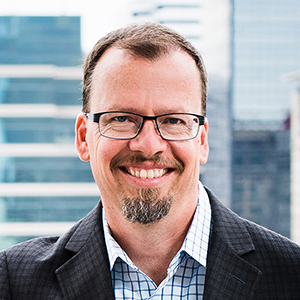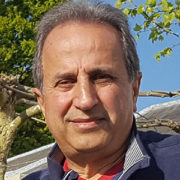
October 25, 2017
In a zero-net energy world, operation of both buildings and the electric grid need to be more flexible and responsive. This symposium explored the interaction of ZNE buildings, DERs and the increasingly renewable-rich electrical grid. It brought together engineering and design professionals, policy experts, researchers and other thought leaders to address how recent successes are changing existing ZNE paradigms, and how our policies, building energy standards, and aspirational ‘Big Bold Energy Strategies’ should evolve to deliver deep greenhouse gas reductions and a healthy economy in the next decade.
California has been a leader in efforts to promote greenhouse gas reduction through codes and policies targeting construction of zero-net energy buildings that include renewable, distributed energy resources (DERs) such as roof-top solar. Effectiveness of these policies, combined with an increase of utility-scale solar to meet state renewable portfolio requirements (33 percent by 2020 and 50 percent by 2030) have changed grid-building interactions such that common assumptions about demand shifting and building operations may no longer be appropriate. For example, in contrast to a decade ago, grid-supplied energy during mid-afternoon may be produced with lower greenhouse gases than at night. Below we provide bios and presentations from speakers.
This event was free and open to the public, offered as an on-site seminar and live webinar. It was co-sponsored by the ASHRAE Golden Gate Chapter, the Center for the Built Environment, and PG&E. It took place on October 25, 2017, at the PG&E Pacific Energy Center in San Francisco, CA.
Speakers and Presentations
-

Fahmida Ahmed
Director, Sustainability and SEM Business Services, Stanford University
Presentation: Stanford Energy System Innovations
Fahmida Ahmed directs Stanford’s Sustainability and Energy Management (SEM) Business Services initiatives and the campus program Sustainable Stanford. She supports long-term energy infrastructure planning; designs, implements, and directs assessment and outreach for sustainability programs; oversees business systems and analytics initiatives; and serves on numerous campus working groups and committees. Before joining Stanford in 2008, she was the Sustainability Specialist at UC Berkeley, where she architected and managed its climate program. Prior to her career in sustainability, Fahmida worked in financial services and high-tech. Fahmida earned a B.A. in Economics from Smith College and a Master’s in Environmental Science and Management from the Bren School at UC Santa Barbara.
-

Alexi Miller, PE, LEED AP
Senior Project Manager, New Buildings Institute (NBI)
Presentation: The GridOptimal Initiative: A New Rating System and Metric for Building-Grid Interactions
Alexi Miller brings insight and analysis about cutting-edge technologies and strategies to diverse stakeholders as part of a wide-ranging effort to improve the energy performance of the built environment. As NBI’s lead engineer he manages technical tools and resources including the Getting to Zero Buildings Database, FirstView, and the Retrofit Savings Estimator. His analysis supports projects having to do with ZNE buildings, building controls, evaporative cooling, deep energy savings retrofits, energy modeling software, emerging technologies, codes and policies, and more. Prior to joining NBI he spent six years at The Cadmus Group. Alexi is a registered mechanical engineer and LEED-AP+ accredited (Operations & Maintenance specialty).
-

Shanti Pless, PE
Senior Energy Efficiency Research Engineer, National Renewable Energy Laboratory
Presentation: Zero Energy Commercial Buildings: Research for the Next Generation
Shanti Pless joined the Commercial Building Research Group at NREL in 1999 with a focus on applied research and design processes for commercial building energy efficiency and building integrated renewable energy. This work has included facilitating numerous integrated design processes and energy modeling teams needed to realize cost-effective zero-energy commercial buildings. Shanti has written more than 50 journal articles, industry publications, guidebooks, and technical reports related to energy efficiency and zero-energy buildings, with frequent national keynote speaking experience at industry conferences such as Greenbuild, AIA, and ASHRAE. He was awarded an ASHRAE Technology Award in 2013 for NREL’s large-scale zero-energy Research Support Facility.
-

Snuller Price
Senior Partner, Energy + Environmental Economics (E3)
Presentation: Update on Zero-Net Energy (ZNE) in California
Snuller (Snu) Price has more than 20 years of experience supporting utilities and state and federal government clients with energy policy and resource planning. He has helped develop methods that regulators widely use to assess the cost-effectiveness of cogeneration, demand response, electric vehicles, energy efficiency, and building standards. He has also managed economic evaluations of net energy metering for behind-the-meter solar in many states. Currently he leads the development of utility planning tools that evaluate distribution plans for financial risk, reliability, and uncertainty, and devising rate designs that encourage cost-effective and sustainable business models. Snu holds an MS in engineering economic systems and operations research from Stanford; and degrees in engineering and economics from Swarthmore College.
-

Paul Schwer, PE, LEED AP, ILFI Cascadia Fellow
President, PAE
Presentation: Beyond Zero Net Energy Building Case Studies
Paul Schwer has been on a mission for more than 30 years to design the highest performing buildings possible. The proof is in his projects—from the Bullitt Center, which is the largest commercial Living Building in the world, to the Rocky Mountain Institute’s new headquarters, which is seeking to go beyond Net-Zero Energy. As president of PAE, Paul leads a talented group of mechanical and electrical engineers committed to sustainable design. He is also a fellow at the International Living Future Institute, a past AIA board member, and served on the national juries for both the AIA COTE Top Ten Awards and the ENR Top Project Awards. He is a licensed engineer in five states (ID,MT,NY,OR,WA) and holds a BS in mechanical engineering from Bucknell University.
-

Mazi Shirakh, PE
Senior Engineer, Technical Lead for Zero Net Energy (ZNE), Building Energy Efficiency Standards, California Energy Commission
Presentation: Proposed 2019 Building Energy Efficiency Standards ZNE Strategy
Mazi Shirakh, PE is a senior mechanical engineer at the California Energy Commission. The state of California has established the goal of zero net energy (ZNE) by 2020 for residential buildings and 2030 for nonresidential buildings. One of the primary vehicles for delivering this goal is the Building Energy Efficiency Standards (BEES), also known as Title 24, Part 6 and 11. Mazi is currently the ZNE lead for the upcoming 2019 cycle of the BEES; previously, he was the project manager for the 2005, 2008, 2013, and 2016 cycles, working with the PG&E, Edison, SDG&E, SMUD, LADWP and a large team of consultants to make building envelopes and systems as efficient as possible, then require appropriate PVs to make ZNE a reality.
-

Pauline Souza, AIA, LEED Fellow, LBC Hero
Partner, Director of Sustainability, Director of K – 12 and Community Studio; WRNS Studio
Presentation: The Path to Zero Net Energy: Finding the Story Line
Pauline has dedicated her career to the building and advocacy of high-quality sustainable environments with a particular focus on education and civic projects. At WRNS she is responsible for implementing sustainable design principles into all projects and business operations. She currently serves as a USGBC Green Schools National Chair, and has served as the USGBC Green Schools Advocate since 2007. Pauline has led award-winning projects such as the Sacred Heart School’s ZNE Stevens Library, the Atherton Civic Center, and the ZNE Watsonville Water Resources Center which earned the 2010 AIA COTE Top Ten Green Project award. Pauline was recently awarded the USGBC Green Business Leader Award, the UCSGBC Greenest Apple Award, and the Living Building Challenge Hero Award. Pauline earned her B.Arch from UC Berkeley.
Continuing Education
AIA: This program qualified for 6.5 AIA CES learning units with HSW.
LEED: See the GBCI Credential Maintenance Program Guide for information on self-reporting attendance at this program to support General Continuing Education (CE) hours required for maintenance of LEED Green Associate and LEED AP credentials.
Sponsors
Platinum

Gold

Silver

Organizers

